
email us
ted@chattanoogaroofingco.com

call us now
(423) 308-ROOF
Search Results
- Home > Search results for 'asphalt shingles'
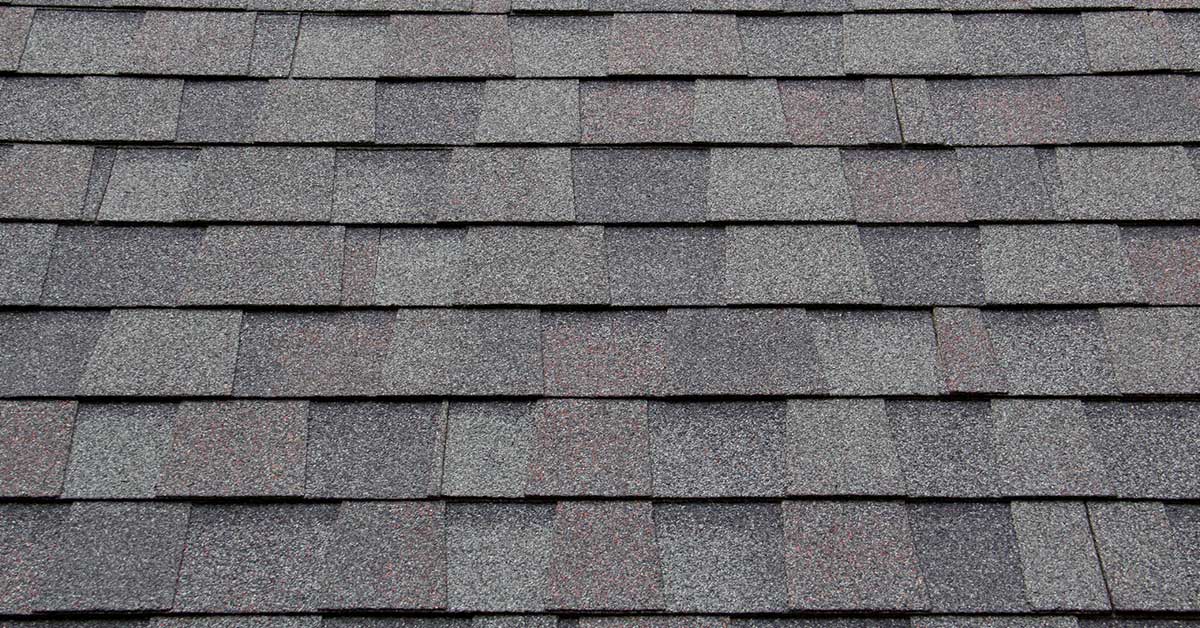
18 Nov. 2021
What Are the Common Problems With Asphalt Shingles?
Many homeowners are debating whether or not they should go with an asphalt shingle roof. One common question is, “what are the common problems with asphalt shingles?” Most homeowners in the United States use asphalt shingles as their primary roof covering. This is largely because they’re inexpensive and easy to install. This form of roofing has a few drawbacks that should be considered before making a decision.
In this article, Chattanooga Roofing Co. provides an overview of the 5 most common asphalt shingle problems.
5 Common Problems With Asphalt Shingles
1. Life Expectancy
The lifespan of an asphalt shingle roof is significantly lower than that of nearly every other form of roof. As a rule of thumb, asphalt roofs endure between 10 and 20 years before they need to be replaced.
2. Roof Repairs
Asphalt shingle roofs do not have a good reputation when it comes to long-term dependability. The shingles will need to be repaired or replaced if they are damaged by extreme weather or aging.
3. Gloeocapsa Magma
Gloeocapsa magma is a microorganism that looks like green-blue algae. It can cause ugly black streaks on your asphalt shingle roof.. In addition, gloeocapsa magma can damage shingles and reduce their lifespan. Asphalt shingles include limestone that bacteria chew away over time, thus weakening the shingles. A roof with weak shingles is more prone to require repairs due to shingles breaking or flying away.
4. Color Limitation
Grays and browns are the most frequent colors for asphalt shingles. Asphalt shingles come in a restricted range of colors. For that reason, with this roofing material, it will be tough to achieve a unique roof in a vivid hue.
5. Blistering
Blistering of the shingles can occur on a poorly ventilated shingle roof. The blisters grow as a result of the blistering caused by the extreme heat. Blisters on shingles cause the granules that act as a protective barrier to loosen, reducing their effectiveness. You should replace shingles that have blistered excessively because this can shorten the lifespan of your roof.
Do you have questions regarding any of the common problems with asphalt shingles? Call Chattanooga Roofing Co. today at (423) 799-2173. We have professionals who will be glad to answer any questions you may have.
- By: chattroof
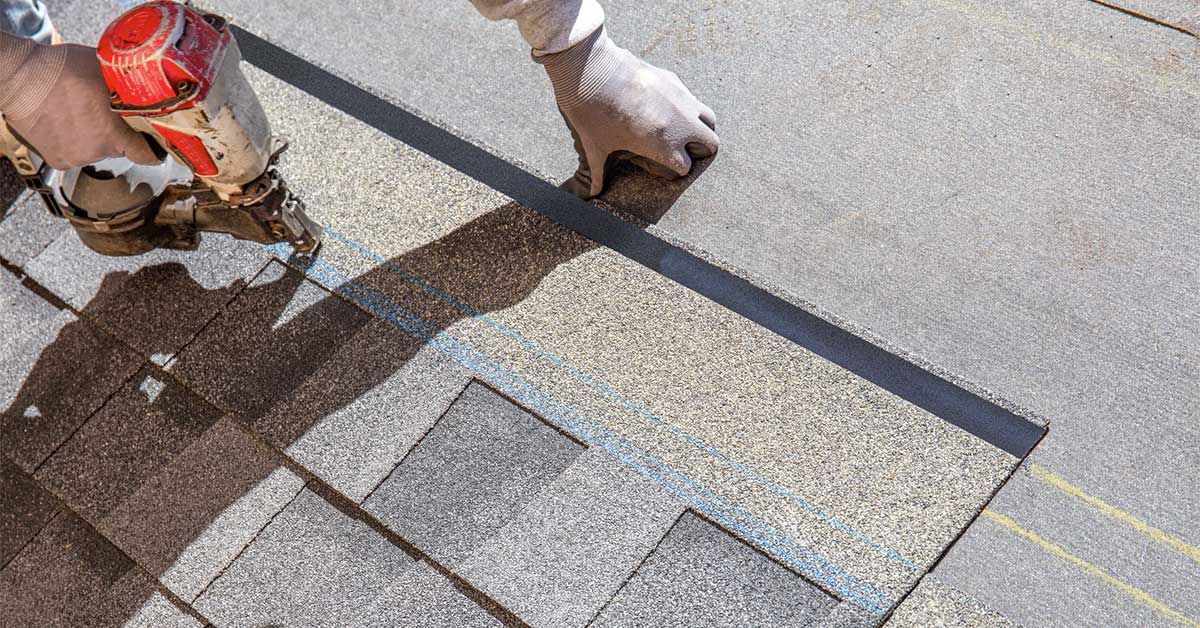
03 Jul. 2019
3 Main Types of Asphalt Roofing Shingles
Asphalt shingles have been the most popular roofing material since they were invented. There are 3 main types of asphalt roofing shingles to choose from. They’re the first option for most homeowners. That’s because of their attractive design, affordability, versatility, reliability, and durability. To get value for your investment, you need to choose high-quality asphalt roof shingles. Then, have them professionally installed by a knowledgeable and skilled roofer.
Can’t make up your mind about which type of asphalt roofing shingles to buy?
3 Main Types of Asphalt Roofing Shingles to Choose From
1. 3-tab Asphalt Shingles
This type of asphalt roofing shingles is made from highly durable fiberglass granules coated on a base mat. They’re colorful, affordable, and reliable. As the lower-end model, 3-tab asphalt shingles are lightweight and designed for cost-effective production. What’s more, they offer an accessible, weatherproof solution with professional installation. Planning to replace your roof on a budget? In that case, 3-tab asphalt shingles may be the right choice.
2. Dimensional Asphalt Shingles
Dimensional Asphalt shingles are the most popular asphalt shingles in the market. These multi-layered shingles have a reputation for their impressive durability and versatility. For that reason, most homeowners will never have second thoughts about their choice. Many brands come with a 30-year warranty (ask your roofer to make sure). Nevertheless, how long they last depends on which shingles you choose. In addition, installation method plays a part. They can be quite beautiful thanks to their wide range of colors.
As expected, good things come at a price. Therefore, it’s worth knowing that you will pay 20% more than 3-tab shingles to have dimensional shingles on your roof. The good news is simple: dimensional shingles are worth every dime you spend on them.
3. Luxury/Premium Asphalt Shingles
Luxury shingles are without a doubt the highest-quality laminated asphalt shingles on the market. They are designed to withstand all kinds of harsh weather thanks to their heavyweight and functionality. In addition, they’re easily available in a wide range of colors, patterns, and dimensions depending on your needs. Their stunning beauty, versatility, reliability, and durability make them ideal for homeowners who have no problem spending top dollar for the best roofing shingles.
Roofing is one of the best ways to set your home apart. The type of roofing you invest in says a lot about your personality and priorities. For that reason, make sure to choose the right asphalt roofing shingles for your home. And leave the installation to professionals. For a free estimate, call Chattanooga Roofing Company at (423) 799-ROOF today or schedule your estimate online.
- By: chattroof
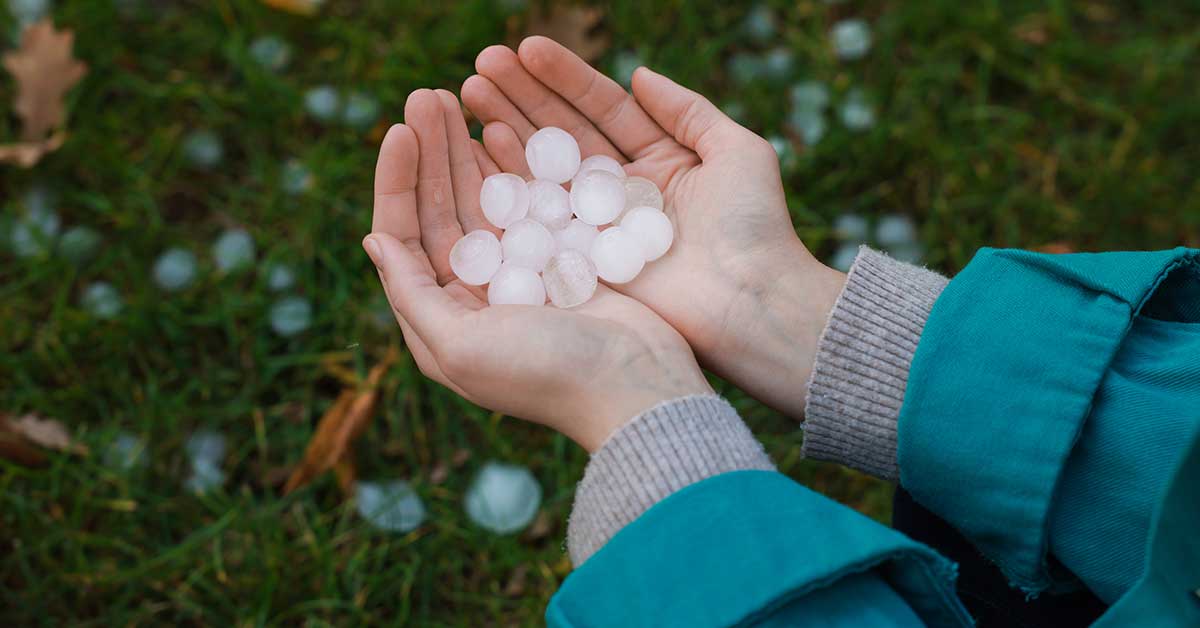
27 Feb. 2023
What Kind of Hail Will Damage an Asphalt Shingle Roof?
The roof is an essential component of any building. Besides protecting from harsh weather conditions, your roof keeps the structure safe and secure. However, when severe weather strikes, your roof can receive significant damage, and hail is one of the most damaging elements. Additionally, asphalt shingle roofing is particularly vulnerable to hail damage. The shingles can be easily cracked or even torn off, leaving the underlying structure exposed. In this blog, we will explore the different types of hail damage that can occur on an asphalt shingle roof. So, what kind of hail will damage an asphalt shingle roof? Let’s dive in.
First, What Kind of Hail Will Damage an Asphalt Shingle Roof?
Let’s get the short answer out of the way right away. Hail that’s a half-inch in diameter may be reason to call a professional roofer for an inspection – especially if strong wind is involved. However, if the hail is closer to an inch in diameter, count on damage and plan for repair work.
Damage that Hail Does to an Asphalt Shingle Roof
1. Bruising
Hail can cause dents or bruises on an asphalt shingle roof, leading to a loss of granules from the shingle surface. This can result in weakened shingles, which are more susceptible to damage from further hailstorms or other extreme weather conditions.
2. Cracking
Hail can also cause cracks in asphalt shingles, leading to leaks and other water damage. Even small cracks can allow water to penetrate the shingle. This can lead to damage to the underlying structure of the roof.
3. Puncturing
Larger hailstones can puncture through the surface of asphalt shingles, leaving holes that allow water to seep into the roof. This can result in significant damage to the underlying structure of the roof, as well as damage to the interior of the building.
4. Granule Loss
Asphalt shingles are coated with small granules that protect the shingle from UV rays and other environmental factors. Hail can dislodge granules from the shingle surface. As a result, this can weaken the shingle and leave it vulnerable to further damage.
5. Shingle Displacement
Hail can also cause asphalt shingles to become displaced from the roof, exposing the underlying structure to the elements. This can result in water damage to the roof and interior of the building, as well as potentially compromising the roof’s structural integrity.
Conclusion
In conclusion, hail can cause significant damage to asphalt shingle roofs, including bruising, cracking, puncturing, granule loss, and shingle displacement. If you suspect that your roof has been damaged by hail, it is important to have it inspected by a professional as soon as possible. Timely repairs can help prevent further damage and extend the life of your roof. Therefore, homeowners must invest in high-quality roofing materials that withstand severe weather conditions, including hail. By taking proactive steps to protect your roof, you can help ensure the safety and security of your home or business, even in the face of extreme weather.
For a complete hail damage inspection of your roof, call Chattanooga Roofing Co. today. We’ll be glad to help!
- By: chattroof
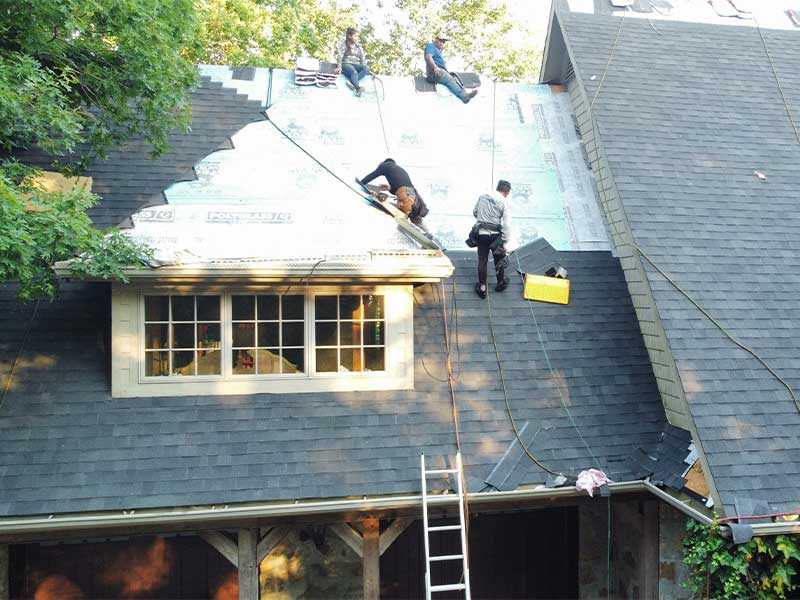
21 Sep. 2024
Longevity and Durability: Choosing a Roof Installation That Will Last
Longevity and Durability: Choosing a Roof Installation That Will Last
As a homeowner, investing in a roof installation is one of the most significant decisions you’ll have to make for your property. With so many options available, it can be overwhelming to find the right roofing solution that not only looks aesthetically pleasing but also stands the test of time. After all, no one wants to deal with the hassle and cost of constantly repairing or replacing their roof. This is why choosing a durable and long-lasting roof should be a top priority when considering any exterior renovations. In this blog post, we’ll delve into the key factors you need to consider when selecting a roof installation that will provide longevity and durability for your home. So if you’re in the market for a new roof or simply curious about what makes certain roofs more durable than others, keep reading!
Roofing material durability
As one of the most critical components of a building structure, the roofing material plays a crucial role in protecting the property from external factors such as weather damage, physical impact, and insulating the interior. Choosing the right type of roofing material is, therefore, a critical decision that requires a thorough evaluation of factors, such as lifespan and weather resistance, among others. When considering the durability of roofing material, it is essential to look at the specific climatic conditions of the region in which the building is located. For instance, Asphalt shingles, while relatively affordable, may be susceptible to damage due to high winds, heavy rain, and extreme weather conditions. In contrast, Metal roofing offers outstanding durability, with a lifespan of up to 50 years and exceptional weather resistance, making it an ideal choice for regions that experience extreme weather conditions. Additionally, Tile roofing is a popular choice for its elegance and longevity, boasting a lifespan of up to 100 years and excellent resistance to fire, wind, and hail. Irrespective of the roofing material choice, regular maintenance and inspection are crucial in ensuring the integrity and longevity of the roof. By carefully evaluating the specific roofing material’s lifespan and weather resistance, property owners can make an informed decision and ensure that their investment is well protected.
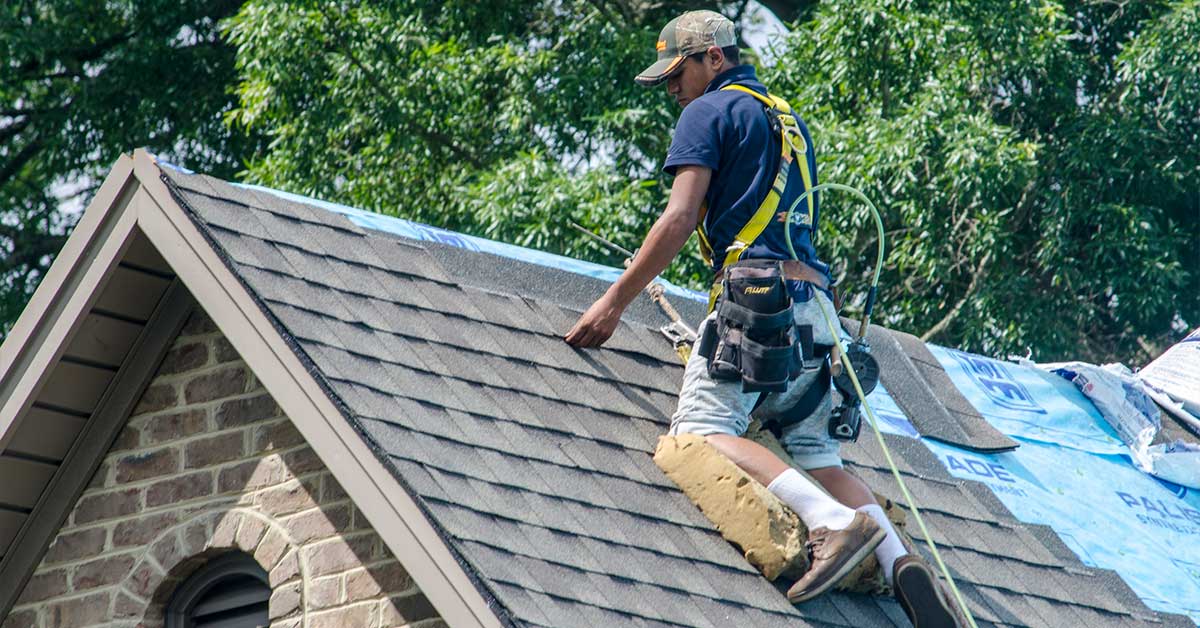
Roof Installation
Roof pitch and ventilation
Roof pitch and ventilation play vital roles in the overall health and longevity of any roofing system. Ensuring the proper slope and airflow are imperative to prevent the damaging effects of moisture from infiltrating your home. This occurs because stagnant air and moisture can accumulate in an improperly vented and sloped roof structure, leading to harmful mold and mildew growth, and ultimately compromising the structural integrity of your roof. Therefore, it is crucial to consider both the pitch and ventilation of your roof during the installation process, as well as any time you plan to do any major roofing work. Expert roofing contractors understand that improper ventilation and slope can lead to major roofing headaches in the long run, and will take care to inspect and correct any issue before it turns into a large-scale problem. So, whether you are installing a new roof or maintaining an existing one, be sure to give careful attention to the pitch and ventilation of your roofing system, to ensure its longevity and protect your home from dangerous moisture damage.
Underlayment and moisture barriers
Underlayment and moisture barriers are essential components of any roofing system. They provide an added layer of protection that enhances the durability and longevity of the structure. High-quality underlayment can effectively guard against moisture, wind, and even UV radiation, preventing damage to the roof and water from penetrating the home’s interior. Besides, moisture barriers provide an essential function in preventing moisture from undermining the roof’s integrity, leading to costly leaks and damage. Choosing the right underlayment and moisture barrier can help create a robust barrier against the elements, ensuring the roof stands the test of time while reducing energy consumption. It’s worth noting that the right choice and installation could ultimately save homeowners thousands of dollars by preventing costly repairs and keeping their home’s interiors safe. In summary, investing in proper underlayment and moisture barrier is a key decision that will pay off all the way.
Fastener selection
Fastener selection is a critical aspect of any construction project. Choosing the right type of nails is essential when it comes to ensuring the durability and longevity of the finished structure. Hot-dipped galvanized or stainless steel nails are the preferred option for many construction professionals due to their inherent resistance to rust and corrosion. These nails are specially treated to prevent rusting, making them ideal for use in harsh climates where moisture and humidity are common. Hot-dipped galvanized nails are the ideal choice for projects located in coastal areas or those exposed to saltwater spray, as they offer superior resistance to rust and corrosion. Stainless steel nails, on the other hand, are more suitable for projects located in dry, arid climates. Choosing the right type of nail for your construction project could mean the difference between a structure that lasts for decades and one that requires frequent repairs or replacement. By taking the time to select the appropriate nails, you can ensure that your project will stand the test of time and withstand the elements, no matter where it is located.
Skylight and vent flashing
Skylight and vent flashing play a critical role in protecting the roof against water damage. Flashing is essential in areas where the roofing material meets a vertical surface or protrusion, such as vent pipes, skylights, chimneys, and walls. Without proper flashing, water can easily penetrate these areas, causing leaks and moisture damage to the underlying structure. That is why it is essential to ensure that flashing is properly installed and sealed. Skylight and vent flashing are commonly made of rust-resistant metals like aluminum, copper, and stainless steel, which can withstand exposure to the elements and effectively channel moisture away from the roof’s surface. With the correct installation and sealant, these materials can provide long-lasting protection against leaks and water damage. Investing in quality skylight and vent flashing can not only save you money on repairs but also extend the life of your roof.

Roof Installation
Inspecting for wear
Inspecting for wear is a vital aspect of any maintenance program, and it must be done correctly. When it comes to checking for curling, cracking, or damage – particularly near the end of the material lifespan – attention to detail and focus is paramount. Deeper inspections can reveal subtle signs of wear that may not be immediately noticeable to the naked eye. The key to effective inspection is keeping abreast of the latest developments in inspection technology. With the right tools and techniques, maintenance personnel can detect the early signs of wear, identify potential causes, and take corrective action before major issues develop that can compromise performance or safety. Inspecting for wear is a challenging task, but it is also a vital one that should never be neglected. So, ensuring that everything is done correctly is of utmost importance.
In conclusion, choosing the right roofing material and ensuring proper installation can greatly impact the longevity and durability of your roof. Whether it be asphalt shingles, metal roofing, or tile roofing, each option has its benefits and drawbacks. However, by considering factors such as weather resistance and lifespan, you can make an informed decision that best suits your needs. Additionally, don’t underestimate the importance of proper roof pitch and ventilation to prevent moisture issues. And don’t forget about using high-quality underlayment and moisture barriers to protect against wind and water damage. Pay attention to fastener selection as well – using appropriate nails for your climate can make a world of difference in the longevity of your roof. Always make sure to properly seal flashing around skylights and vents to avoid potential leaks. Lastly, regularly inspecting your roof for wear and tear is crucial, especially as it nears the end of its lifespan. By following these tips and making necessary repairs or replacements when needed, you can ensure that your roof remains strong and dependable for years to come. Don’t wait until it’s too late – take action now for a safe and secure roof over your head.
Chattanooga Roofing Company
https://www.google.com/maps?cid=3134983317498625437
https://www.google.com/maps?cid=3134983317498625437
(423) 401-6407
- By: Collaborate
- commercial roofing, roofing contractor, roofing installation, best roofing installation, Roofing specialists, Roofing contractors near me, Roofing solutions, Affordable roofing, Quality roofing, Installing Roofs, New Roof Installation, Roofing Installers, roof replacement, Roof Construction, roofing company, Roofing Repairs, roofing services, Professional Roofing, residential roofing, Expert Roofing
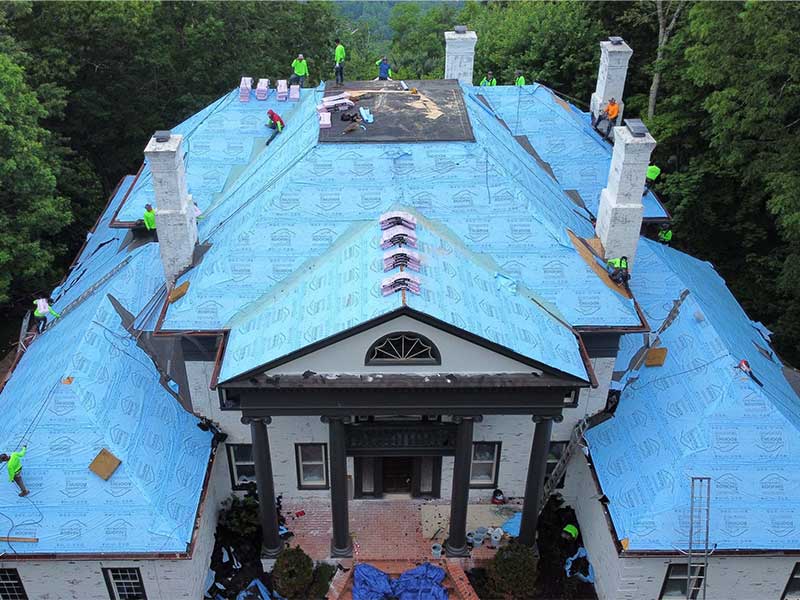
14 Sep. 2024
Increase Your Home’s Value with the Right Roofing Contractor Near Me
Increase Your Home’s Value with the Right Roofing Contractor Near Me
When considering home improvement projects that significantly boost your home’s market value and curb appeal, roofing might not be the first thing that comes to mind. However, the impact of a quality roof on your home’s overall value cannot be overstated. This comprehensive guide will help you understand the signs of a worn-out roof, the benefits of professional roofing services, and how to find the right roofing contractor to ensure your home’s value is maximized.
Signs of a Worn-Out Roof
Recognizing the signs of a worn-out roof is crucial in maintaining your home’s value and preventing costly repairs down the line. Some key indicators include
- Age of the Roof: Most roofs have a lifespan of 20-30 years. If yours is within this range or older, it may be time for an inspection or replacement.
- Missing, Cracked, or Curled Shingles: This is a clear sign of wear and can lead to leaks.
- Roof Valleys: If the shingles in the roof valleys are broken or missing, it’s a direct path for water to enter your home, especially during heavy rains.
- Granules in the Gutters: Shingles lose more granules towards the end of their life cycle. If your gutters are filled with these granules, your roof may be nearing its end.
- Daylight through the Roof Boards: Seeing daylight through your roof boards in the attic is a red flag that your roofing material has weakened.
- Sagging: A sagging roof is an indication of trapped moisture and weakening boards, meaning a call to a professional is urgently needed.
Early identification of these signs can save homeowners from the headache of dealing with extensive damage that can severely impact the home’s value and safety.
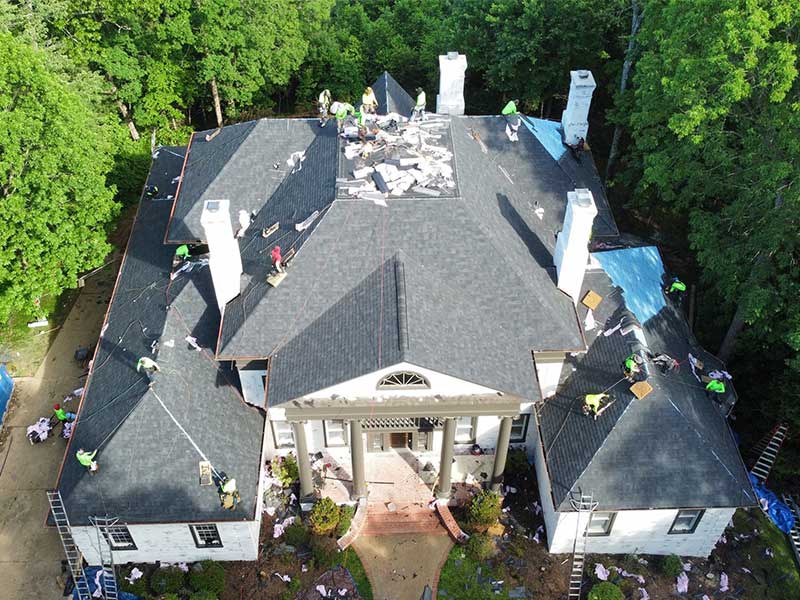
Roofing Contractor Near Me
Benefits of Professional Roofing Services
Opting for professional roofing services offers a myriad of advantages, ensuring not only the enhancement of your home’s aesthetic appeal but also its overall integrity. Here are some key benefits:
- Expertise and Quality Workmanship: Professional roofers bring a wealth of experience and skill, guaranteeing high-quality workmanship that adheres to industry standards and local building codes. This expertise ensures your roofing project is done right the first time, utilizing the best materials and techniques.
- Safety: Roofing projects can be hazardous. Professionals are equipped with the necessary safety equipment and training to prevent accidents, offering peace of mind to homeowners.
- Time and Cost Efficiency: While DIY roofing might seem cost-effective, it can often lead to higher expenses due to errors or the need for rework. Professional services ensure the job is efficiently completed within a predetermined budget and timeframe, potentially saving money in the long run.
- Warranty and Peace of Mind: Most professional roofing contractors provide warranties for their workmanship and the materials used, offering homeowners peace of mind knowing that any issues will be addressed without additional costs.
- Value Addition: A professionally installed or repaired roof significantly enhances your home’s curb appeal and increases its market value. This is particularly beneficial for those considering selling their property.
In summary, investing in professional roofing services is a prudent decision that pays dividends in terms of safety, quality, and value addition, ensuring your home remains a secure and attractive asset.
Steps to Find the Right Roofing Contractor Near Me
Finding the right roofing contractor is paramount to ensure your roofing project is completed to the highest standards. Follow these steps to secure a professional who meets your needs:
- Research and Shortlist: Begin by researching local roofing contractors. Check their websites, read online reviews, and ask for recommendations from friends and family. Aim to create a shortlist of reputable professionals in your area.
- Verify Licensing and Insurance: Before proceeding, confirm that each contractor is licensed to operate in your state and carries both liability insurance and worker’s compensation. This protects you in case of accidents or damage during the project.
- Check Experience and References: Look for contractors with extensive experience in roofing projects similar to yours. Ask for references and, if possible, visit their previous projects to gauge the quality of their work.
- Get Multiple Quotes: Contact your shortlisted contractors for quotes. While it might be tempting to go for the lowest offer, consider the value and quality of work being provided. A detailed quote should include labor, materials, and any other associated costs.
- Ask About Warranties: Inquire about the warranties offered both on materials and workmanship. A reputable contractor will stand behind their work and provide a warranty that covers at least several years post-installation.
- Communication is Key: Choose a contractor who communicates well and makes you feel comfortable. They should be willing to answer your questions, provide updates, and explain the process thoroughly.
- Make Your Decision: After comparing the contractors on your shortlist, select the one that best fits your requirements in terms of quality, cost, and reliability.
By diligently following these steps, you can find a reputable roofing contractor who will ensure your project is completed efficiently, safely, and to the highest quality, thereby protecting your investment and enhancing your home’s value.
How to Choose the Right Roofing Material for Your Home
Choosing the right roofing material for your home involves several critical factors that directly impact your home’s aesthetics, durability, and energy efficiency. Here are the key considerations to guide you in making an informed decision:
- Climate Compatibility: Select materials that can withstand the specific weather conditions in your area. Some materials are better suited for hot climates, offering excellent reflectivity, while others are ideal for colder regions, providing superior insulation.
- Architectural Style: The material should complement your home’s architectural style. Traditional homes may look best with slate or tile, while metal or asphalt shingles might suit modern designs better.
- Weight: Ensure your home’s structure can support the weight of the material. Heavy materials like slate may require additional structural support, increasing the overall cost.
- Environmental Impact: If sustainability is a priority, consider materials with a lower environmental impact, such as recycled shingles or metal roofing, which are both durable and recyclable.
- Energy Efficiency: Look for roofing materials with good energy efficiency ratings. Materials that reflect solar energy or provide better insulation can help reduce heating and cooling costs.
- Cost and Lifespan: Evaluate the cost versus the lifespan of the material. While some materials may have a higher upfront cost, their longer lifespan and lower maintenance requirements could make them more economical over time.
- Color and Aesthetics: The color and look of the roofing material can significantly affect your home’s overall appearance and curb appeal. Consider how the color will blend with your home’s exterior colors and the landscape.
- Local Building Codes and HOA Rules: Check for any restrictions imposed by local building codes or homeowner association (HOA) rules. Certain materials might be prohibited, or specific colors and styles may be required.
- Maintenance Requirements: Consider how much maintenance each type of roofing material requires. Some materials, like metal roofing, are relatively low maintenance, while others, like wood shakes, may require more upkeep to ensure longevity.
By carefully weighing these factors, you’ll be well-equipped to choose the roofing material that best fits your home’s needs, aesthetic preferences, and budget, ensuring your home remains protected and beautiful for years to come.

Roofing Contractor Near Me
The Importance of Regular Roof Maintenance
Regular roof maintenance is crucial for extending the lifespan of your roof and preventing costly repairs or replacements. Neglecting your roof can lead to serious issues, such as leaks, mold growth, and structural damage, which can significantly compromise the safety and comfort of your home. Here are several reasons why maintaining your roof should be a priority:
- Prevents Water Damage: Routine inspections can identify and fix small issues like cracked tiles or loose shingles before they lead to more significant leaks and water damage.
- Enhances Energy Efficiency: A well-maintained roof contributes to better home insulation, keeping your home warmer in the winter and cooler in the summer, which can help in reducing energy bills.
- Maintains Curb Appeal: A roof in good condition maintains and enhances your home’s overall appearance and curb appeal, which is especially important if you plan to sell your property.
- Protects Against Weather Damage: Regular maintenance ensures your roof is prepared to withstand adverse weather conditions, from heavy rain and snow to high winds.
- Saves Money in the Long Run: Identifying and addressing minor issues early can prevent the need for more extensive and expensive repairs in the future.
Establishing a regular maintenance schedule, including professional inspections at least once a year, is key to ensuring your roof remains in optimal condition. This proactive approach not only protects your investment but also provides peace of mind knowing your home is safe and secure.
Conclusion
A well-maintained roof is essential for protecting your home and ensuring its longevity. By choosing the right roofing contractor, selecting a suitable material, and prioritizing regular maintenance, you can safeguard your investment and enhance your home’s value. Consider all the factors mentioned in this guide before making any decisions to ensure you choose the best roofing option for your specific needs and preferences. Remember to also consult with a professional roofing contractor for their expert advice and guidance. By following these steps, you can have a beautiful and durable roof that will keep your home safe and comfortable for years to come.
Chattanooga Roofing Company
https://www.google.com/maps?cid=3134983317498625437
https://www.google.com/maps?cid=3134983317498625437
(423) 401-6407
- By: Collaborate
- Find Roofing Companies Around, Nearest Roof Installation Service, Roofing Professionals Nearby, Closest Roof Replacement Contractors, Roofing Repair Near My Location, Local Roofing Contractors, Nearby Roofing Specialists, Roofing Companies Close By, Trusted Roof Repair Nearby, Roofing Contractors Around Here, Closest Roofing Services, Find Roofing Experts Near, roof installation near me, Roofing Help Near Me, roofers in my area, Roofing Contractors in the Vicinity, Roofing Services Nearby, Nearby Roofing Solutions, Local Roof Repair Experts, Local Roofing Company Options.

07 Sep. 2024
How to Choose the Right Roofing Company Near You: A Comprehensive Guide
How to Choose the Right Roofing Company Near You: A Comprehensive Guide
Finding the right roofing company is a critical decision that homeowners and business owners must make with care. The integrity of your roof affects not only the aesthetic appeal of your property but, more importantly, its safety and durability. This comprehensive guide is designed to help you navigate the process of selecting the best roofing company for your needs, ensuring long-term satisfaction and peace of mind.
The Importance of Choosing the Right Roofing Company
Choosing the right roofing company goes far beyond simply finding someone to replace or repair your roof; it involves entrusting the safety, durability, and overall integrity of your home to professionals who fully grasp the critical nature of their task. A high-quality roof is much more than an aesthetic feature; it serves as the first line of defense against the harshness of environmental elements, tirelessly protecting your property from the relentless assault of rain, wind, scorching heat, and other weather-related challenges that can arise unexpectedly.
Opting for a reputable and experienced roofing company can lead to long-lasting roofing solutions that not only enhance the visual appeal of your home but also significantly reduce the likelihood of future damages, thereby sparing you from the stress and financial burden of unnecessary repair costs. Moreover, the right roofing contractor will ensure that the materials used in the construction of your roof are of the highest quality, sourced from reputable suppliers, and that the installation process strictly adheres to the latest industry standards and best practices, further enhancing both the value and lifespan of your roof.
The installation of a roof is a meticulous process that requires precision, expertise, and a deep understanding of both the materials involved and the environmental conditions the roof will need to withstand. This makes the choice of a roofing company a critical decision—one that can significantly impact not only the immediate outcome of the roofing project but also the long-term safety, aesthetics, and investment value of your property.
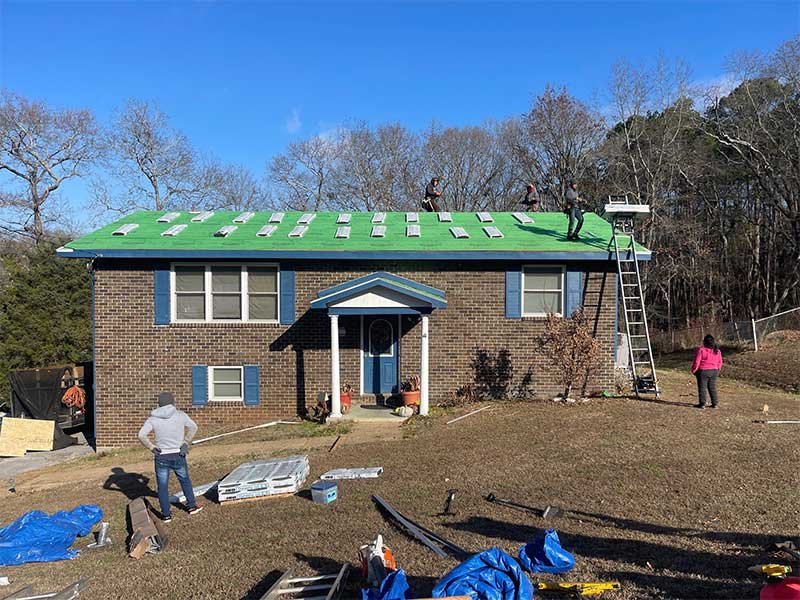
Roofing Company
Understanding Your Roofing Needs: Residential vs. Commercial
Before choosing a roofing company, it’s essential to understand the key differences between residential and commercial roofing systems, as each has unique requirements and challenges. Residential roofing typically involves steep slope applications with options like asphalt shingles, tile, or metal roofing materials. These materials are chosen for their aesthetic appeal, durability, and ability to protect homes from the elements. Residential roofs tend to be more straightforward in design, focusing on architectural style and personal preference.
On the other hand, commercial roofing systems are often flat or have a low slope and require materials that can cover larger surface areas effectively. These systems might utilize built-up roofing (BUR), single-ply membranes (such as TPO, PVC, or EPDM), or modified bitumen. Commercial roofs must withstand a different set of environmental stresses, including heavy equipment, foot traffic, and potentially harmful chemical exposures. They also need to consider factors such as drainage, insulation, and compliance with local building codes, which are far more stringent.
Recognizing whether your roofing project is residential or commercial is crucial, as it influences the choice of materials, design considerations, installation processes, and, ultimately, which roofing company is best equipped to meet those specific needs. Roofing contractors often specialize in either residential or commercial projects, so identifying your requirements early on will help narrow down your options to those most capable of providing the expertise and service your project demands.
Qualities to Look for in a Reliable Roofing Company
When searching for a reliable roofing company, several key qualities should guide your decision-making process. These characteristics ensure that you select a contractor who will not only do the job right but also provide value and assurance throughout the lifespan of your roof.
- Licensing and Insurance: A reputable roofing company should have all necessary licenses for operating in your area, ensuring they adhere to all local building codes and regulations. Insurance, including liability and worker’s compensation, is equally critical, as it protects you from any potential liabilities in case of accidents or damage to your property during the project.
- Experience and Reputation: Look for a company with a solid track record of quality workmanship and positive customer feedback. Experienced roofers are more likely to recognize and effectively address any challenges specific to your roofing project. Online reviews, testimonials, and references can provide valuable insights into the company’s reputation and the satisfaction of past clients.
- Detailed Quotes and Contracts: A reliable roofing company will offer a detailed quote that outlines the scope of work, materials to be used, timelines, costs, and payment terms. This level of transparency helps prevent any unexpected expenses or disputes. A formal contract should also be presented before any work begins, ensuring both parties are clear on the expectations and obligations.
- Communication and Professionalism: Excellent communication is crucial for any successful roofing project. A trustworthy company will keep you informed at every step, from the initial assessment to the completion of the project. Professionalism in their dealings, timeliness, and the way they handle queries or concerns reflects their commitment to customer satisfaction.
- Warranty and After-Sales Service: A quality roofing company stands behind their work with a warranty that covers both materials and labor. This shows confidence in their workmanship and provides you peace of mind knowing that any future issues will be addressed. After-sales service, including maintenance and repairs, is also a sign of a dependable company that prioritizes long-term relationships with their clients.
Finding a roofing company that embodies these qualities will help ensure that your roofing project is completed efficiently, effectively, and with the highest level of professionalism.
How to Research and Shortlist Potential Roofing Companies
Researching and shortlisting potential roofing companies involves a thorough process to ensure you find a reputable provider that meets your specific needs. Begin by conducting an online search to identify companies in your area, paying close attention to those with professional websites and positive customer reviews on platforms such as Google, Yelp, or industry-specific sites like Houzz or Angie’s List. It’s wise to check the Better Business Bureau (BBB) for any accreditation and to see if any complaints have been filed against the companies.
Networking with friends, family, or neighbors who have recently undergone roofing projects can provide firsthand insights and recommendations. Their experiences can help you gauge the reliability, professionalism, and quality of work offered by certain contractors.
Once you have a preliminary list of companies, examine their online presence for evidence of their work, such as project galleries, and look for any industry certifications that indicate a professional commitment to quality and ongoing education. Additionally, verify their licensing and insurance directly with them to ensure they are up to date.
Narrow down your list by assessing which companies specialize in the roofing services you need, whether residential or commercial, and consider their experience with the specific materials you’re interested in. Reach out to each for an initial consultation or quote, noting their responsiveness, willingness to answer questions, and overall approach to customer service.
This process will help refine your list to a select few roofing companies that not only meet your project’s requirements but also exhibit a strong potential for delivering satisfactory results.

Roofing Company
What to Expect from a Professional Roofing Company
When engaging with a professional roofing company, clients should anticipate a high level of service that encompasses several key aspects, beginning with an in-depth consultation and evaluation of their roofing needs. During this initial consultation, representatives should offer thorough insights into the best materials and approaches suited to the project’s unique requirements, considering factors such as climate, the building’s architecture, and budget constraints.
- Site Inspection and Project Planning: A detailed site inspection is an essential step, where the roofing experts assess the current condition of your roof, identifying any underlying issues that need addressing before work begins. This is followed by the development of a comprehensive project plan that outlines the scope of work, project timelines, and an estimated completion date.
- Clear Communication and Regular Updates: Throughout the project, a professional company will maintain open lines of communication. Clients can expect regular updates on the project’s progress, any changes to the plan, and quick responses to any questions or concerns they might have.
- Quality Workmanship and Safety Compliance: Skilled workers using high-quality materials will carry out the work. A professional roofing company is committed to safety, ensuring that all work complies with local building codes and safety regulations to protect both the workers and your property.
- Completion and Final Inspection: Upon project completion, a thorough inspection is conducted to ensure the work meets the clients’ expectations and industry standards. Clients are then provided with a complete rundown of the work performed, along with care instructions and warranty information for the materials and labor used.
- Aftercare and Support: Post-installation support is a hallmark of a professional roofing company. Clients should expect information on maintaining their new roof, along with offers of scheduled maintenance visits. Additionally, a reputable company will stand by their work, readily available to address any future concerns or warranty claims.
By setting these expectations, clients can feel confident in their choice of roofing company, assured that their investment is protected and their roofing needs are expertly met.
Conclusion
Finding a quality roofing company is crucial for the success and longevity of your roof. By researching and shortlisting potential companies, setting clear expectations, and thoroughly evaluating their credentials and services, you can ensure that your project is completed with professionalism, efficiency, and excellent results. Don’t settle for less when it comes to something as important as your roof; choose a trusted and reputable roofing company that prioritizes customer satisfaction and long-term relationships.
Chattanooga Roofing Company
https://www.google.com/maps?cid=3134983317498625437
https://www.google.com/maps?cid=3134983317498625437
(423) 401-6407
- By: Collaborate
- commercial roofing, roofing contractor, roof installation, Roofing specialists, Roofing contractors near me, Roofing professionals, Roofing experts, Roofing solutions, Roof repair service, Trusted roofing company, Roofing company reviews, Affordable roofing, Roof Maintenance, Quality roofing, roofing services, Emergency roofing services, local roofing company, Licensed roofing company, residential roofing, Experienced roofing team.
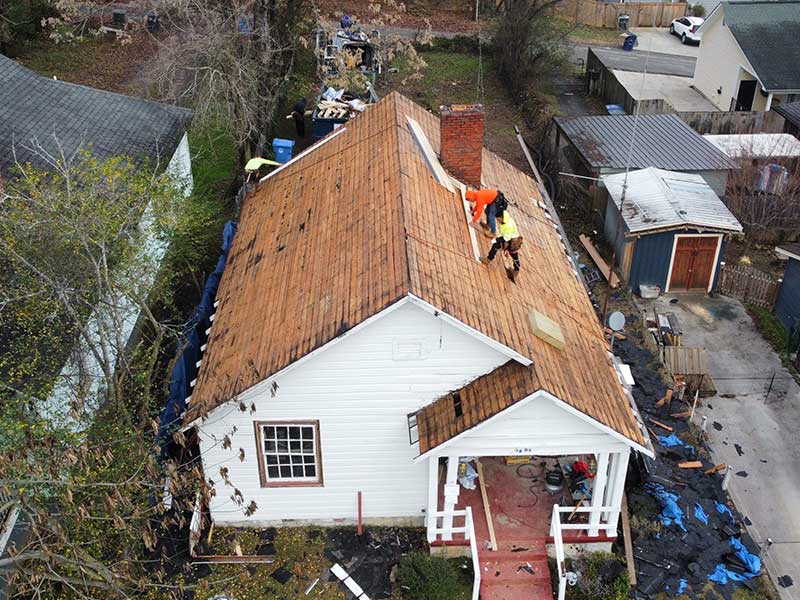
30 Aug. 2024
Reasons You Should Hire Professional Roofers for Your Home Improvement Project
Reasons You Should Hire Professional Roofers for Your Home Improvement Project
Are you looking to give your home a much needed facelift but are intimidated by the thought of tackling DIY tasks? If yes, consider hiring a professional roofer for all your home improvement needs. Professional roofers not only guarantee quality results but can get the job done quickly and safely. From installing new residential roofs to repairing existing shingles, a professional roofer is an invaluable asset when it comes to making sure that your next project is completed with precision and care. In this blog post, we’ll discuss some of the top reasons why you should always enlist the help of a qualified Roofing Technician when taking on Home Improvement projects.
The Advantages of Hiring a Professional Roofer
When it comes to roofing concerns, hiring a professional roofer is the smartest choice you can make. Not only does it guarantee excellent work, but it also comes with numerous benefits that you won’t get from a DIY approach.
First and foremost, professional roofers are trained to identify and assess underlying roof problems that an untrained eye may miss. This minimizes the risk of unexpected and costly repairs down the line. They tackle the root cause instead of just patching up visible damage, which extends the lifespan of your roof and saves you money in the long term.
Professional roofers are experts in recommending the best roofing material for your specific climate. They stay up-to-date with the latest advancements in roofing materials and technology. This means your home will be well-protected from the elements and energy-efficient.
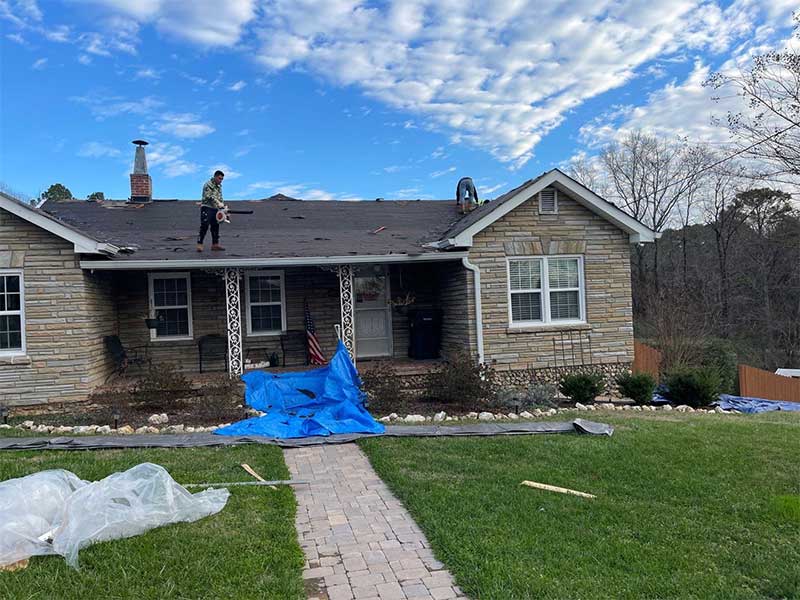
Roofers
Furthermore, professional roofers come equipped with the necessary tools, equipment, and protective gear for any roofing project. They have access to high-quality materials that are only available to trusted contractors. Additionally, they adhere to safety protocols to prevent accidents and expensive legal issues.
Lastly, a professionally installed roof adds value to your property. A well-maintained and sturdy roof enhances the aesthetic appeal of your home and prolongs its life. When it’s time to sell, having an expertly installed roof increases the value of your home and saves potential buyers from future costly repairs.
Protect Your Home and Loved Ones with Professional Roofers
Your roof is your first line of defense against the elements. But when it comes to installation, repair, or maintenance, safety should be your top priority. Attempting to fix or replace a roof without the necessary equipment and expertise is a major risk to yourself and others. That’s why hiring a professional roofer is crucial.
Professional roofers are trained and certified to handle the risks of working at heights. They have the proper safety equipment, such as harnesses, helmets, and ropes, to protect themselves on the job. Their experience and expertise allow them to identify and prevent potential hazards.
Extreme weather conditions can pose additional risks for roofers, but professionals know how to adapt. They can reschedule their work to avoid dangerous weather and wait for safer conditions to continue. Your safety and the safety of your property are their top concerns.
Not only do professional roofers prioritize safety, but they also take measures to protect your property. They’ll erect barriers and use drop cloths to safeguard your lawn and outdoor furniture during the project. And after the job is done, they’ll clean up thoroughly, leaving no trace of debris that could harm your family or pets.
Experience a Lasting Roof with Quality Materials and Craftsmanship You Can Trust
When it comes to your roof, you deserve nothing but the best. That’s why we only use the highest-quality materials and employ skilled craftsmen to ensure your roof is built to last. From start to finish, our commitment to excellence shines through every step of the installation process.
We partner with trusted suppliers who are known for their exceptional products and sustainable practices. This means you can feel confident that your roof will withstand the harshest weather conditions and remain resilient over time. Whether you choose asphalt shingles, metal roofing, or tile roofing, you can count on their durability and long-lasting reliability.
Our team of experienced craftsmen takes pride in their work, paying attention to every detail to ensure a superior result. From the solid underlayment to the precise application of shingles or tiles, we take the time to do it right. This not only guarantees a lasting roof but also provides peace of mind for our valued clients.
We stand behind our work and offer a comprehensive guarantee on both our materials and craftsmanship. Our roofing experts are also available for routine maintenance and repairs, so you can enjoy a top-notch roof for years to come. Trust us to protect your home or business with our dedication to quality materials and exceptional craftsmanship that lasts for decades.
Time Savings – Experienced Roofers Will Get the Job Done Quickly and Efficiently
Save time and get quality results with experienced roofers. Our professionals have the skills and knowledge to efficiently complete your roofing project without cutting corners. With years of experience, they can assess your roof’s condition and address any underlying issues before starting the work.
Plus, our expert roofers come prepared with the right tools and equipment for a seamless installation or repair. They can accurately estimate the time needed to finish the job, ensuring it stays on schedule. This means you can get back to your normal routine in no time.
Not only do our roofers have the experience, but they also stay up-to-date on the latest materials, techniques, and technologies in the industry. They can provide professional advice on the best options for your specific needs, saving you time and money in the long run. Choose our roofing experts for a hassle-free and efficient experience.

Roofers
Enhancing Beauty: Expert Roofers Create Stunning Results
When it comes to roofing, most homeowners prioritize durability and functionality. But there’s an important aspect that often gets overlooked – aesthetics.
Professional roofers not only excel in constructing roofs that can brave any elements, but they also understand the significance of creating visually pleasing results. Aesthetic enhancement is a crucial part of roofing, and skilled roofers know exactly how to achieve it through their craftsmanship and attention to detail.
Roofing materials come in various colors, textures, and styles. Expert roofers can help homeowners select materials that not only provide long-lasting protection but also enhance the overall appearance of their homes. With shingles, tiles, or metal roofing, skilled roofers can create unique and eye-catching designs.
Moreover, professional roofers have the right tools and equipment to execute complex designs like roof slopes, angles, and curves. These design elements add depth and dimension to a roof, making it stand out and enhancing the overall aesthetic appeal of the home.
Investing in a professional roofer is worth every penny. Not only will it give you peace of mind, but it will also provide you with top-notch materials and impressive outcomes. If the safety of your loved ones and the appearance of your home are important to you, then trusting a professional roofer for a quality installation is a no-brainer. Their years of experience ensure a quick and efficient job that will stand the test of time. Don’t hesitate any longer, choose a reputable roofing service provider who is dedicated to excellence and enjoys the beauty of a stunning new roof. Contact experienced roofers today and watch your home transform.
Chattanooga Roofing Company
https://www.google.com/maps?cid=3134983317498625437
https://www.google.com/maps?cid=3134983317498625437
(423) 401-6407
- By: Collaborate
- commercial roofers, Roofing specialists, Roof installation experts, Certified roofers, Roofing experts, Roofing contractors, roof repair specialists, roof maintenance professionals, roof replacement teams, shingle repair crews, roof renovation contractors, roof inspection professionals, metal roofing contractors, residential roofing teams, roofing services, emergency roof repair experts, local roofing companies, flat roof specialists, roofing companies, experienced roof installers
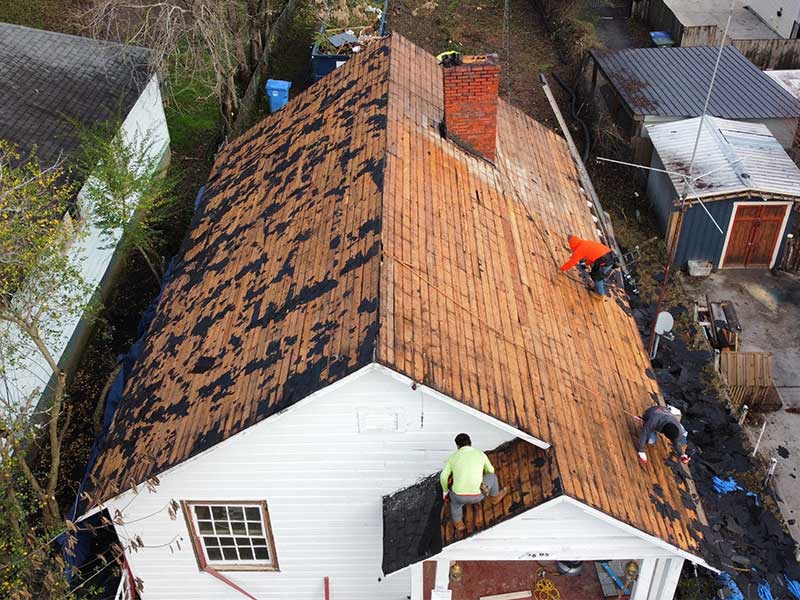
23 Aug. 2024
Roofing Companies: What You Need to Know Before Considering One
Roofing Companies: What You Need to Know Before Considering One
Choosing the right roofing company for your home or business can be a daunting task. With so many options and the importance of a durable and resilient roof, it’s essential to know what to consider before making a decision. The roofing industry is constantly evolving, and it’s critical to work with a company that stays up-to-date with the latest materials, installation techniques, and safety protocols. But how do you differentiate between reputable roofing companies and one that’s not? In this blog, we’ll provide you with the information and insights you need to make an informed decision when selecting a roofing company. By the end of this article, you’ll have a comprehensive understanding of what to look for in a roofing contractor to ensure a successful and stress-free roofing project.
Understanding the Roofing Process: From Inspection to Installation
Before diving into the details of choosing a roofing contractor, it’s important to have a basic understanding of the roofing process. This will not only help you communicate more effectively with potential contractors, but it will also give you insight into what to expect during each step of the project. The roofing process typically includes:
- Inspection: A reputable roofing company will start by conducting a thorough inspection of your roof to assess its condition and identify any potential issues.
- Material selection: Once the inspection is complete, the contractor will recommend suitable materials for your specific needs and budget.
- Preparation: Before installation can begin, preparations must be made, which may include removing old shingles or repairing damaged areas.
- Installation: This is where the actual work begins, and the new roof is installed according to industry standards and best practices.
- Cleanup: Once the installation is complete, a reputable roofing company will ensure that your property is left clean and free of debris.
It’s important to note that each roofing project is unique, and some steps may vary based on individual factors. For instance, if your roof has extensive damage, repairs may need to be made before the installation process can begin.
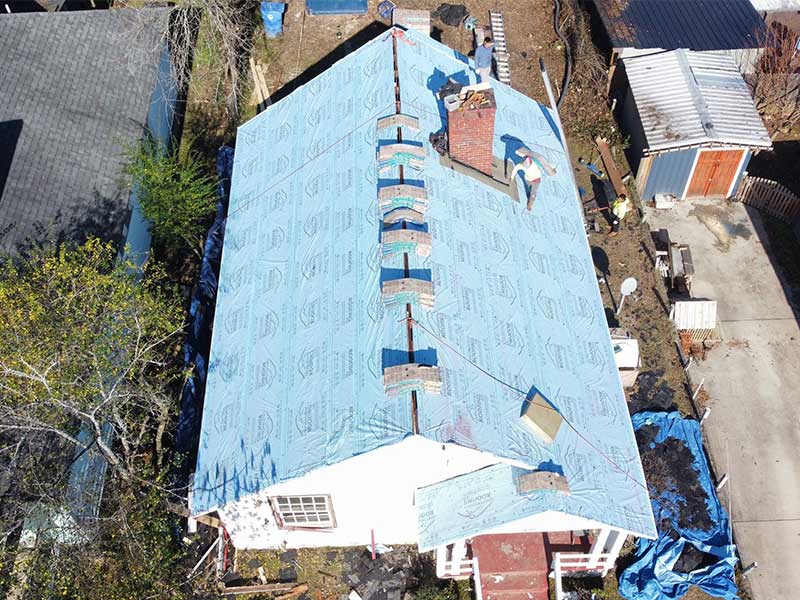
Roofing Companies
The Price Tag Explained: Breaking Down Roofing Costs
One of the most significant factors to consider when choosing a roofing company is the cost. A new roof is a significant investment, and it’s crucial to have a clear understanding of what you’re paying for. The overall price will depend on various factors, including:
- Roof size: The square footage of your roof will play a major role in determining the cost as larger roofs require more materials and labor.
- Materials: The type of roofing material you choose will also impact the price. For example, asphalt shingles are generally less expensive than metal or tile.
- Roof pitch: A steeper roof pitch may require more safety measures and scaffolding, which can increase the overall cost.
- Labor costs: Labor prices can vary between different companies and regions, so it’s important to get multiple quotes and compare them.
- Additional features: If your roof has unique features such as skylights or chimneys, this may add to the cost of the project.
It’s also essential to understand that a higher price does not always equate to better quality. It’s important to research the materials used by each company and make sure they are of high quality and meet industry standards.
Material Matters: How to Choose the Right Roofing Material for Your Home
As mentioned earlier, the type of material used for your roof can significantly impact the overall cost. However, it’s essential to consider more than just price when selecting a roofing material. Factors such as durability, maintenance requirements, and climate should also be taken into account. Some common roofing materials include:
- Asphalt shingles: These are the most popular choice due to their affordability and versatility.
- Metal roofing: This material is known for its durability and long lifespan, making it a popular choice for those looking for a long-term solution.
- Tile roofing: While more expensive than other materials, tiles offer excellent protection and can last up to 50 years with proper maintenance.
- Slate roofing: This premium material is known for its beauty and longevity but comes with a higher price tag.
When considering materials, it’s also crucial to research their energy efficiency and potential impact on your home’s curb appeal. A reputable roofing company will be able to provide you with the information you need to make an informed decision.
Warranty Wisdom: Deciphering What’s Covered and What’s Not
A warranty is a crucial aspect of any roofing project, as it provides protection and peace of mind for both the homeowner and the contractor. It’s important to thoroughly read and understand what is included in a warranty before signing any contracts. Some key factors to consider include:
- Length: The length of a warranty can vary between companies, with some offering up to 50 years of coverage.
- Coverage: Different warranties may cover different aspects of the roof, such as material defects or workmanship errors. Make sure you know what is and isn’t included in your warranty.
- Transferability: If you plan on selling your home in the future, it’s important to know if the warranty is transferable to new homeowners.
- Maintenance requirements: Some warranties may require regular maintenance to remain valid, so it’s important to understand your responsibilities as a homeowner.
Having a clear understanding of your warranty can save you from unexpected costs in the future and ensure that your roof is adequately protected. It’s always recommended to ask for written copies of any warranties and thoroughly review them before starting any work.
The Credentials that Matter: What to Look for in a Roofing Company
Aside from experience and expertise, there are several other credentials that you should look for when choosing a roofing company. These include:
- License and insurance: A reputable roofing company will have all the necessary licenses and insurance to protect their workers and your property.
- Manufacturer certifications: Many roofing materials manufacturers offer certification programs, so make sure the company you choose has these credentials.
- Warranties: Make sure the company offers warranties for both materials and labor to ensure that you are covered in case of any issues.
- References: Don’t be afraid to ask for references from previous clients. This will give you a good idea of the company’s reputation and work quality.
By taking the time to research and compare these credentials, you can rest assured that you are working with a reputable roofing company that will provide quality work and excellent customer service.

Roofing Companies
The Essential Checklist for Hiring a Roofing Company
To help you make an informed decision, here is a checklist of essential things to look for when hiring a roofing company:
- Valid license and insurance
- Manufacturer certifications
- Warranties for materials and labor
- Positive references and reviews from previous clients
- Clear communication and transparent pricing
- Knowledgeable and experienced staff
By following these guidelines, you can confidently choose a roofing company that will provide you with a quality roof and peace of mind. Remember, the right roofing company is not just about the price; it’s also about trust, expertise, and reliability. So be sure to do your research and choose wisely for your home’s protection and your peace of mind.
Choosing the right roofing company is a crucial step in ensuring a successful and stress-free roofing project. By understanding the roofing process, materials, warranties, and company credentials, you can make an informed decision that will ultimately save you time, money, and potential headaches in the future. Remember to prioritize quality over price and always do your due diligence before signing any contracts. With these tips in mind, you can confidently embark on your roofing project with the assurance that your home will be well-protected for years to come. So, take the time to research and choose wisely for your home’s protection, and enjoy the peace of mind that comes with a quality roof.
Chattanooga Roofing Company
https://www.google.com/maps?cid=3134983317498625437
https://www.google.com/maps?cid=3134983317498625437
(423) 401-6407
- By: Collaborate
- Roof repair services, Local roofing experts, Roofing specialists, Commercial roofing contractors, Top-rated roofing companies, Experienced roofers, Roofing professionals, Affordable roofing services, Roofing contractors, Residential roofers, Roof installation companies, Roof maintenance providers, roofing services near me, Trusted roofing companies, emergency roof repair, Certified roofing contractors, roof replacement services, Roofing solutions, professional roofers, Licensed roofing contractors

09 Aug. 2024
The Ultimate Guide to Choosing the Best Roofer Company
The Ultimate Guide to Choosing the Best Roofer Company
Choosing the best roofer company for your home can be a daunting task. With so many options to choose from, it can be difficult to determine which one is trustworthy, reliable, and skilled. Your roof is one of the most important parts of your home, protecting you and your family from the elements, so it’s essential to find a company that can provide top-notch service and quality workmanship. In this guide, we will provide you with all the information you need to make an informed decision when choosing a roofer company. From understanding the different types of roofing materials to asking the right questions during the hiring process, our guide will help you navigate the roofing industry with ease. Whether you’re in need of a repair, replacement, or brand new installation, you can trust our comprehensive guide to lead you to the best roofer company for your home.
Importance of Having a Reliable Roofing Contractor
The importance of having a reliable roofing contractor cannot be overstated. Your roof is the most important part of your home, as it protects you and your family from the elements. Without a reliable roofing contractor, you run the risk of having a poorly installed or maintained roof, which can lead to leaks, water damage, and even structural damage to your home.
A reliable roofing contractor is essential for any homeowner, as they provide a range of services that are crucial for maintaining a healthy and durable roof. These services include regular inspections, repairs, and replacements, as well as emergency services in the event of severe weather or natural disasters. Additionally, a reliable roofing contractor will use only the highest quality materials and employ skilled professionals to ensure that your roof is properly installed and maintained for years to come.
Finally, a reliable roofing contractor can save you money in the long run by preventing costly repairs and replacements. A well-maintained roof can last for decades, and a reliable roofing contractor can help you achieve this longevity by providing regular maintenance and repairs. Additionally, a reliable roofing contractor will work with you to find cost-effective solutions to any roofing problems that may arise, saving you money on unnecessary repairs or replacements.

Roofer Company
Understanding Roofing Materials
Before choosing a roofer company, it’s important to understand the different types of roofing materials available. Each material has its own unique benefits and considerations, so it’s essential to choose one that fits your home’s specific needs and your budget.
Asphalt Shingles
Asphalt shingles are the most common roofing material used in residential properties. They are affordable, easy to install, and come in a variety of colors and styles. They also have a lifespan of 20-30 years, making them a cost-effective option for homeowners.
Metal Roofing
Metal roofing is becoming increasingly popular due to its durability, energy efficiency, and long lifespan (up to 50 years). It’s also low maintenance and can withstand harsh weather conditions, making it an excellent choice for those living in areas with extreme weather.
Tile Roofing
Tile roofing is a more expensive option, but it offers unmatched durability and aesthetic appeal. It can last up to 50 years or more and comes in various styles, including clay, concrete, and slate.
Wood Shingles and Shakes
Wood shingles and shakes are a popular choice for their natural and rustic look. However, they are less durable than other roofing materials and require regular maintenance to prevent rot and mold growth.
Other Considerations
Aside from the different types of roofing materials, there are other factors to consider when choosing a roofer company. These include the climate in your area, the slope of your roof, and any local building codes or regulations. It’s important to discuss these factors with your potential roofer company to ensure that they are knowledgeable and experienced in working with your specific roofing needs.
By understanding the various roofing materials and their benefits, you can make an informed decision when choosing a roofer company that will provide the best service and results for your home.
Why a Roofer Company is the Best Choice for roofing services
While there are many general contractors who offer roofing services, choosing a specialized roofer company is always the best choice. Here’s why:
Expertise and knowledge in roofing: A specialized roofer company has years of experience and training in all types of roofing materials, techniques, and processes. They have an in-depth understanding of how to properly install, maintain, and repair roofs, ensuring that your home is in good hands.
Quality materials: A roofer company will use only the highest quality materials for your roof, ensuring its durability and longevity. They have access to industry-leading products and can recommend the best materials for your specific needs.
Safety: Roofing can be a dangerous job, and specialized roofer companies have the necessary training and equipment to ensure the safety of their workers and your property.
Specialized services: A roofer company will have a range of specialized services, including inspections, repairs, replacements, and emergency services. They can also provide valuable advice and recommendations for maintaining your roof in between services.
Warranty and insurance: A specialized roofer company will often offer warranties on their work, giving you peace of mind that your roof is protected. They also have insurance to cover any potential damages or accidents during the roofing process.
By understanding the importance of having a reliable roofing contractor, the different types of roofing materials available, and why a specialized roofer company is the best choice, you can make an informed decision when selecting a roofer company for your home.
Roofing Services Offered by the Roofer Company
When choosing a roofer company, it’s essential to know what services they offer. A reputable and experienced company will provide a range of services to meet all your roofing needs. Some of the common roofing services offered by roofer companies include:
Roof inspections: Regular roof inspections are crucial for identifying any potential issues before they become major problems.
Repairs: Whether it’s a small leak or significant storm damage, a reliable roofer company will have the skills and equipment to make necessary repairs.
Replacements: If your roof is beyond repair, a roofer company can provide full replacements using high-quality materials.
New installations: For new construction or home additions, a roofer company can install a brand new roof according to your specifications.
Emergency services: In the event of severe weather or natural disasters, a reliable roofer company will offer emergency services to protect your home and family.
With a wide range of services, a roofer company can take care of all your roofing needs, ensuring that your roof remains in top condition for years to come.
Hiring the Right Roofer Company
When it comes to hiring a roofer company, there are essential considerations to keep in mind. These include:
Credentials and experience: Make sure the company is licensed, insured, and has a good reputation in the industry.
Written estimates: Get written estimates from multiple companies to compare prices and services.
Warranty: A reliable roofer company will offer warranties for their work and materials used.
Communication: Choose a company that communicates clearly and promptly throughout the entire process.
Reviews and references: Read reviews and ask for references to get a better understanding of the company’s past work.
By thoroughly researching and considering these factors, you can ensure that you hire the right roofer company for your home’s specific needs.

Roofer Company
Questions to Ask When Hiring a Roofer Company
When hiring a roofer company, it’s essential to ask the right questions to determine if they are the best fit for your project. Here are some questions to consider:
- How long have you been in business?
- Can you provide references or examples of past work?
- Do you have insurance and proper licensing?
- What types of roofing materials do you specialize in?
- Will you provide a written estimate and contract for the project?
- Do you offer any warranties or guarantees on your work?
Asking these questions can help you gather important information and make an informed decision when choosing a roofer company. Remember, it’s essential to choose a reputable and experienced company that will provide high-quality services for your home’s specific needs.
In conclusion, a reliable roofing contractor is essential for maintaining a healthy and durable roof. By understanding different roofing materials, the services offered by roofer companies, and how to choose the right one for your home, you can ensure that your roof remains in top condition for years to come. With proper maintenance and choosing a reputable roofer company, you can save money on unnecessary repairs or replacements and have peace of mind knowing that your home is well-protected from the elements. So don’t wait until it’s too late, start researching and hiring a roofer company today to ensure the longevity and functionality of your roof. Take some time to research and find the best fit for your budget and roofing needs – it will be worth it in the long run. Happy roofing!
Chattanooga Roofing Company
https://www.google.com/maps?cid=3134983317498625437
https://www.google.com/maps?cid=3134983317498625437
(423) 401-6407
- By: Collaborate
- roofing contractor, professional roofers, commercial roofing services, Roofing specialists, Roof installation experts, Roof repair company, Certified roofers, Roofing professionals, Residential roofing company, Roofing experts, Trusted roofers, Roofing contractors in [location], roofing company near me, Experienced roofing company, roofing services, Affordable roofing services, local roofing company, Skilled roofing technicians, reliable roofers, Top-rated roofing company.

11 Jul. 2024
How to Find the Best Roof Installation Company for Your Needs
How to Find the Best Roof Installation Company for Your Needs
Struggling to find the perfect roof installation company? Don’t worry, it’s easier than you think! You deserve top-notch service and skilled workmanship without draining your bank account. Luckily, we have some tips and tricks that’ll make your search a breeze. If you’re ready to upgrade or replace your roof, read on for expert advice on finding the best installation company for you.
Do Some Research – What kind of roofing materials do you want, and what is your budget for the project
Choosing the right roofing materials for your project is crucial. With a wide range of options available, it’s important to do your research.
One popular choice is asphalt shingles. They’re affordable and easy to install, but they may require frequent repairs.
Metal roofing, although pricier, offers durability and energy efficiency, making it cost-effective in the long run.
Clay tiles and slate roofing are known for their beauty and durability, lasting up to 100 years.
Consider your budget before making a decision. While some materials may be more expensive initially, they can save you money in the long term.
Remember to find a balance between cost and value. Research and compare your options to make an informed choice.

Roof Installation
Get Recommendations – Ask friends and family who have recently had their roof installed
To ensure that you select a reliable roof installation company, it is highly recommended that you reach out to your friends and family members who have had their roofs recently installed. Seeking recommendations from people you trust is an excellent way to narrow down your options and ultimately find a trustworthy business to work with.
When contacting your trusted sources, ask detailed questions regarding their experiences with the company they used for their roof installation. Ask about the quality of the materials, the level of customer service they received, and how long the process took. The more information you can gather, the better prepared you will be to make an informed decision.
Check Reviews – Look up any online reviews for installation companies in your area
Choosing the right installation company for your project is crucial. To make an informed decision, check online reviews for companies in your area. These reviews provide valuable insights into a company’s service and workmanship.
When researching, look at various sources like Google, Yelp, and Home Advisor. Pay attention to the overall rating and specific comments. Look for recurring complaints about issues like late arrivals or poor quality work.
Don’t forget to read positive reviews too. However, be cautious of fake or solicited reviews. Read comments carefully to ensure authenticity.
Keep in mind that some companies may try to manipulate reviews. Look for reviews from verified customers and analyze the language used in comments.
Make a confident choice by doing thorough research and reading genuine reviews.
Choose the Best Roofing Service Provider: A Comprehensive Guide
Finding the right roofing service provider requires careful research and consideration. With multiple companies to choose from, it’s crucial to make informed decisions. Here’s how:
- Assess Experience: Reach out to companies with a solid track record in the roofing industry. Consider factors like their years in business, the number of completed projects, and their reputation for quality work.
- Get Detailed Pricing: Price matters, so ask for comprehensive pricing information from each company. Don’t forget to inquire about any additional charges or fees that may crop up during the roof installation process.
- Investigate Materials: Don’t overlook the importance of top-notch materials. Look into the types of materials and products each company utilizes. Picking a provider that uses high-quality materials can save you money in the long run by preventing future repairs or replacements.
By following these steps, homeowners can gain a clear understanding of each provider’s capabilities, expertise, and pricing. And by choosing a reputable and reliable provider, you can rest assured that your roof installation will be done to the highest standard of quality and efficiency.
Get Multiple Quotes – Request quotes from each company to compare pricing
When looking for a service provider, it is always wise to get multiple quotes from different companies. This not only helps you compare pricing, but it also allows you to gain a wider perspective on the services being offered. Requesting quotes is a crucial step in the decision-making process, and failing to do so could result in unnecessary expenses and dissatisfaction with the final product.

Roof Installation
It is important to note that each company may have different methods of pricing their services. Some may charge a flat rate while others charge by the hour or based on the size of the project. Therefore, it is crucial to inquire about these details when requesting for quotes.
Furthermore, requesting quotes also gives you the opportunity to learn more about the company’s quality of service. This is because each quote should come with a breakdown of the services being offered. By comparing the services offered by different companies, you can determine which ones are providing value for money and which are not.
Finally, the process of requesting quotes allows you to build rapport with the company, even before starting the project. This relationship can help you establish trust with the company and facilitate smooth communication throughout the project.
Make Your Selection – Once you’ve gathered all your information, select the company that meets your needs and expectations best
Now that you have carefully researched and analyzed all the available information, it’s time to make your selection. Consider all the factors that are most important to you, such as pricing, quality, customer service, and reputation.
Compare each company’s strengths and weaknesses in these areas, and weigh them against your own priorities and expectations. Don’t forget to take into account any special requirements or preferences that may be unique to your situation.
Once you have made a decision, be sure to back it up with specific details and facts that support your choice. Provide a higher level of semantic richness by using descriptive language, statistics, and other relevant data to help convey the reasons behind your decision.
Make the best decision for your roofing project by gathering all the necessary information. Take your time to compare quotes and reviews, and don’t hesitate to negotiate with installation companies. A strong relationship with a professional roofing company is crucial when safeguarding your valuable home investment. Whether you need a complete roof replacement or repair work, selecting the right roofing service provider is essential for meeting your budget and achieving your desired outcome. Don’t overlook special seasonal offers, as many roofers are willing to lower prices during slower months.
Chattanooga Roofing Company
https://www.google.com/maps?cid=3134983317498625437
https://www.google.com/maps?cid=3134983317498625437
(423) 401-6407
- By: Collaborate
- best roofing installation, Roofing installation contractors, commercial roof installation, Reliable roof installation, roof installation cost, Skilled roof installers, New roof construction, Roof installation quotes, Installing a roof, Residential roof installation, Professional roof installers, Roofing installation companies, Roofing installation specialists, Affordable roof installation, Quality roof installation, Expert roof installation, roofing contractor near me, Trusted roof installers, roof replacement services, Roofing installation experts, roofing installation, Roofing installation professionals, roofing installation services, Top-rated roof installers
visit Us: 529 S. Germantown Rd. Chattanooga, TN 37411
email us: ted@chattanoogaroofingco.com
24/7 Emergency call (423) 308-ROOF

